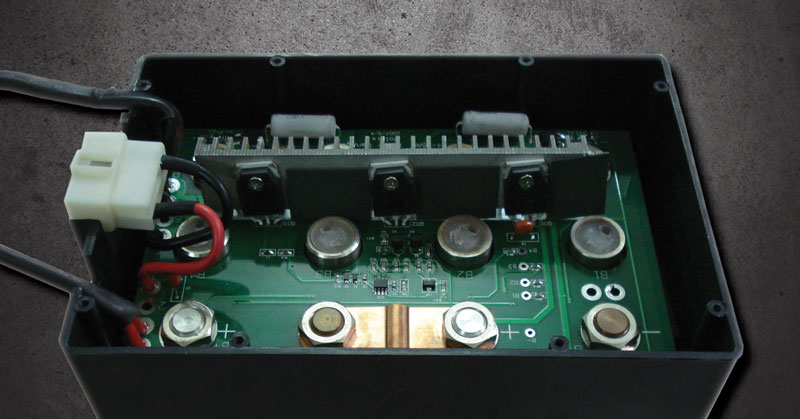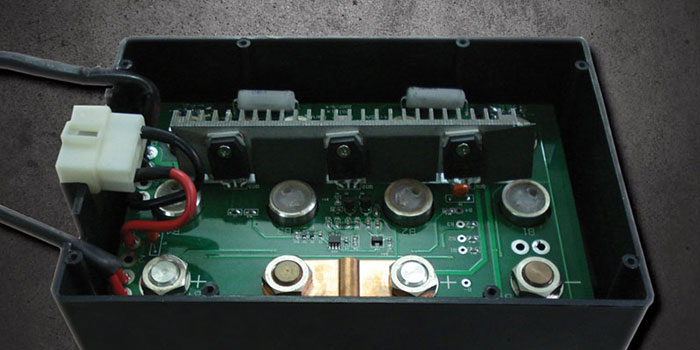
Lithium-Ion Phosphate (LifePo4) batteries have been available in the powersports market for the past few years and continue to gain popularity due to its low weight and high power. But the higher cost of the chemistry as well as more sensitive cells compared to lead-acid, has created some misunderstandings among consumers who purchase these types of batteries.
As with any new technology, there will always be consumers who want the latest and greatest even if they don’t fully understand all of the benefits and downsides. Lithium-Ion replacement starter batteries as well as the rise in popularity of battery jump packs have been driving the growth on this side of the battery market, especially in applications where lightweight and smaller footprint are desired.
“Lithium gets mixed reviews and it hasn’t gotten a lot of good press,” says Deltran’s Alan Bradshaw. “Maybe people don’t understand what they’re getting and may be buying poor quality batteries from some manufacturers that don’t really market products in the U.S. and don’t stand behind their products.”
Some of the bad reputation that lithium batteries have received are from consumers buying online from overseas sources with unknown brands and companies who are selling them with virtually no warranty. Other sources of misinformation has spread through Internet forums as well. One of the things that shows the quality of the battery is the warranty, according to some of our battery experts.
One expert told us that warranties for lithium batteries vary widely from manufacturer to manufacturer, and that dealers should be aware of these warranties and the fine print. It may come back to haunt you if you don’t inform your customers of the right charging methods, or how much is covered. Conditions that may void the warranty (depending on the manufacturer) include: Opening the battery case; non-specified applications such as: aircraft, automotive, motive power; Over-charging, or other error by charger or user setting of charger; Use in excess of cranking (CCA) specifications; Short circuit of main terminals;Improper connections; Over-discharge (i.e., resting voltage allowed to fall below 12.8V/6.4V for Lfx 12V/6V types); Use of chargers intended for lead-acid batteries; Excessive overcranking; Discharge below 8V; And physical damage to the battery occurring after purchase (impact, etc). Warranties may only cover a portion of the replacement battery and/or shipping (again, depending on manufacturer). It’s best to pay attention to the fine print and work with manufacturers that stand behind their products. Granted, not all lithium batteries are alike as our lithium experts pointed out.
One of the challenges for manufacturers is to precisely match cells in order to make up the series of cells that provide the power for the battery. If it is not done correctly, problems will undoubtedly arise.“Quality is a huge problem,” says Bradshaw. “Lithium, because the cells are individual, has to be balanced correctly. Each of those cells need to match to make a good set for a battery. If quality control is low you can have some real problems. Generally, what makes a lithium battery fail is the cell pack is imbalanced.”
Typically in a lead-acid battery you’ve got six cells with the voltage that makes up 12volts (approx. 2.1 volts each). But in the lithium packs, the number of cells makes up the size or the cranking amps. It’s not really cranking amps either, this is where part of the problem comes from; It’s not apples to apples.
“The more cell packs you put together the more power the battery will have in terms of cranking power, not capacity,” says Bradshaw. “One of the problems with the industry right now is there’s no real standards around lithium batteries. In the past, you would think of a battery in terms of cold cranking amps (CCA) such as what the Battery Council International (BCI) puts together for lead-acid batteries. Those standards can’t be applied to lithium. Most lithium batteries lose a lot of power when they’re at 0 degrees. If you were to rank CCA at 0 degrees, almost every lithium battery would fail or have very little cranking amps at that temperature.
Bradshaw says Deltran, for example, rates its batteries with what it calls Lithium Cranking Amps. “We do a 5-second test for the cranking power to measure what we would call an equivalent cranking power to a lead-acid battery,” he says.
Lithium batteries need time to warm up, especially in colder weather. And you can warm them up if you make them active by turning on an accessory such as a headlight. When you turn that headlight on and it begins to activate the chemical reaction between the cells, that’s what generates heat. As that heats up, the lithium becomes active. It builds up the ability to crank, which may seem contrary to the lead-acid battery.
“The best part of the lithium battery is the way it delivers the power,” Bradshaw adds. “If you think of the lead-acid battery, as you begin to crank it delivers the highest cranking amps and then it begins to fall off and curtail its ability to crank. Whereas the lithium battery will crank at the same capacity all the way across the curve. It’s a flat cranking so it’s always delivering that power across the range.“
You’re not getting the losses like you do in a lead-acid battery. As you continue to crank it doesn’t slow down and it keeps delivering that nice even power right across the range until you run it flat.
Many (not all) lithium batteries are protected against what some people refer to as “bricking” or completely discharging. Lithium batteries have a reset or the ability to go down to a certain voltage and then the electronics will turn off inside to keep them from being totally discharged. That’s another big difference between lithium and lead-acid. Lead-acid is just lead and acid. Whereas lithium usually has a circuit board inside and wires. The circuit board acts as a cell balancer, so as the battery is used, the cells are automatically balanced to a usable range. Some have circuitry for overcharge protection and over-discharge protection. Depending on the manufacturer, you can have different electronics in there (or sometimes not much at all).
Another thing to note about lithium is that it charges at different rates than lead-acid types, so you have to be careful what charger you use on it. “A pulse charger like what some manufacturers call desulfation chargers or a pulse charge will kill a lithium battery,” says Bradshaw. “The electronics inside it won’t understand why it’s pulsing back and forth and it burns the board out or ruins the board inside.”
Bradshaw says you can use a low power lead-acid style charger like Deltran’s Battery Tender Jr. to charge its lithium batteries. It won’t hurt it but it’s preferred to use a lithium charger. A lithium charger has two differences: It charges at a higher voltage; Lithium likes to be kept at a higher voltage in the maintenance mode. And it has a softer recovery. When a battery is below 8 volts, a lithium charger will begin to slowly charge it rather than going in with a bulk charge right away. Lithium likes a slower warm up until it builds enough charge acceptance and then it will go into a full bulk mode to bring it back to a full state of charge.
Yuasa, which is now part of GS Yuasa Group that produces over 50 million powersports batteries (including lithium) worldwide each year, says that lithium batteries must be controlled by a management unit, and each application has unique requirements regarding how the cells are controlled.
Currently, Yuasa says that it is developing lithium batteries for powersports applications, but at this time it will not offer any new product until the company is 100 percent confident that the batteries will meet its standards.
In a statement to MPN, Yuasa said that its lithium powersports battery is not intended to replace existing lead-acid models. “Lithium is ideal in certain situations, but at this time we still believe lead-acid batteries are the most economical, safe and reliable option for the majority of powersports vehicle applications.”
Yuasa also pointed out that while lead-acid batteries are almost 100% recyclable, the additional wires and components used in lithium powersports batteries may limit the portion of the battery that can be recycled.
Article courtesy Motorcycle & Powersports News.






